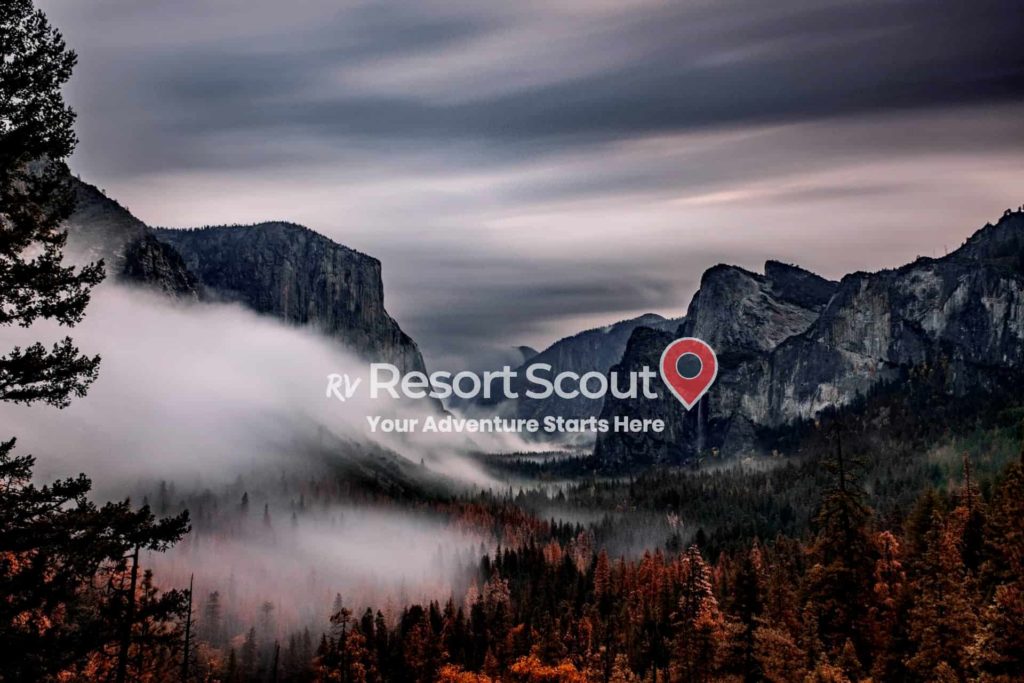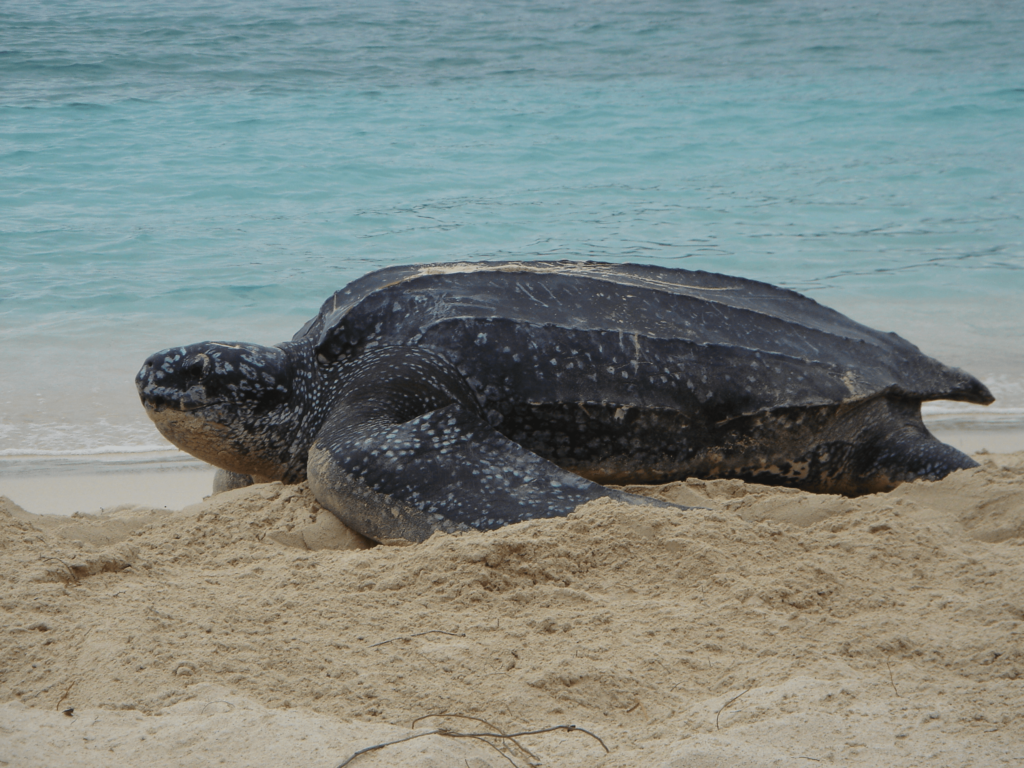The Ultimate Guide: US Virgin Islands National Park

The US Virgin Islands National Park is a beautiful and diverse park located on the island of St. John in the U.S. Virgin Islands. It is known for its white sandy beaches, crystal clear waters, and lush tropical vegetation. The park covers over two-thirds of the island and offers a wide range of activities for visitors to enjoy.
For a condensed view of the park feel free to check out rvResortScouts US Virgin Islands National Park Information listing.
Park History / General Overview
The history of the Virgin Islands National Park goes back to the 1940s. This is when Laurence Rockefeller, a businessman and philanthropist, visited the island of St. John and fell in love with its natural beauty. He saw that the island was facing significant development pressures and knew that it was important to act fast to preserve the island’s unique ecosystem for future generations. In order to do this, he purchased over 5,000 acres of land and donated it to the National Park Service. This donation was the beginning of the park’s creation, which was officially established in 1956.
Rockefeller’s donation not only protected the island’s natural resources but also its cultural heritage. The park’s boundaries were expanded to include several historic sites, including the 18th-century Annaberg Sugar Plantation. The Plantation tells the story of the island’s sugar industry and the enslaved Africans who worked it. The park also includes the remains of the Danish colonial era, including the ruins of sugar mills, slave quarters, and the Danish West India and Guinea Company warehouse.
Virgin Islands Today
The Virgin Islands National Park has grown to become one of the most popular tourist destinations in the Caribbean. Today it attracts visitors from all over the world. It now covers over two-thirds of the island, with more than 7,000 acres of land and sea. The park’s diverse ecosystem, which includes coral reefs, mangrove forests, and dry forests, provides habitats for a wide variety of plant and animal species. In fact, there are over 800 species of fish and more than 300 species of birds.
The park’s mission is to protect and preserve the island’s natural and cultural resources for future generations, while also providing opportunities for visitors to enjoy and learn about them. The park offers a wide range of activities for visitors to enjoy, including hiking, snorkeling, swimming, and bird watching, as well as ranger-led activities and educational programs.
Getting Oriented In The US Virgin Islands National Park
The Virgin Islands National Park is divided into several main sections, each with its own unique features and activities. Understanding the different areas of the park can help visitors plan their visit and make the most of their time.
The North Shore is known for its beautiful beaches, such as Trunk Bay, which is known for its underwater snorkeling trail. This section of the park is popular with swimmers, snorkelers, and sunbathers. It offers a range of amenities, including restrooms, showers, and picnic areas.
The South Shore is home to a number of historic sites, including the Annaberg Sugar Plantation and the Reef Bay Trail. Visitors can learn about the island’s sugar industry and the enslaved Africans who worked it at the Annaberg Sugar Plantation. The Reef Bay Trail offers visitors a chance to hike through the park’s lush rainforest and down to the beautiful Reef Bay.
The East End is the wildest and most remote part of the park. Because of this it is popular with hikers and bird watchers. This section of the park is less developed than the other sections, and visitors will find fewer amenities, but it offers a chance to explore the park’s remote areas and experience the island’s wilderness.
The park’s visitor center is located in Cruz Bay and offers information on park activities, guided tours, and backcountry camping permits. Visitors can also find maps, brochures, and other resources to help them plan their visit.
Essentials
Getting to Virgin Islands National Park is easy. The island of St. John is accessible by ferry from St. Thomas. Visitors can also fly into the nearby airports on St. Thomas or St. Croix and take a ferry to the island. Once you are at the park, there are a few things you need to know.
- Obtain a permit for certain activities: Some activities such as backcountry camping and mooring boats require a permit. Visitors can obtain these permits at the park’s visitor center.
- Respect the park’s resources: The park is home to a wide variety of plant and animal life. Visitors are encouraged to learn about the park’s natural and cultural resources and to respect them while they are in the park.
- Follow the rules: The park has rules and regulations that visitors should be aware of, such as no pets allowed in the park, no smoking or campfires, and no collecting or damaging park resources.
- Visit the visitor center: The park’s visitor center is located in Cruz Bay and offers information on park activities, guided tours, and backcountry camping permits. Visitors can also find maps, brochures, and other resources to help them plan their visit.
- Be prepared: Bring water, sunscreen, and insect repellent. Wear appropriate footwear for hiking and swimming.
Thing You Need to Know
This section will cover a few of the things you need to know when visiting the Virgin Islands National Park.
- Park’s Wildlife: The park is home to a wide variety of plant and animal life, including over 800 species of fish and more than 300 species of birds. Visitors should be aware of the park’s wildlife. It is wise to take precautions such as not feeding the animals or getting too close to them.
- Ranger-led Activities: The park offers a number of ranger-led activities such as guided hikes, snorkeling trips, and educational programs. These activities are a great way to learn more about the park’s resources and to experience the park uniquely.
- Beach Safety: The park’s beaches are generally safe. Nevertheless, visitors should be aware of the park’s strong currents and rip tides while swimming or snorkeling. It’s important to check the beach conditions with a park ranger or at the visitor center before entering the water.
- Weather: The park’s weather is generally warm and humid, but it can change quickly. Visitors should be prepared for sudden rain or storms and bring appropriate clothing and gear.
- Leave No Trace: Visitors are encouraged to follow the Leave No Trace principles. This includes packing out all trash, respecting wildlife and cultural resources, and being mindful of other visitors. This ensures that the park remains a beautiful place for future generations to enjoy.
By being aware of these things, visitors can have a more informed and enjoyable experience while visiting the Virgin Islands. The park’s unique ecosystem, wildlife and cultural heritage, and the weather conditions make it a special destination.

Best Hikes
Hiking is one of the most popular activities in the park, and there are many great trails to explore. The park offers a range of hiking options, from easy nature trails to strenuous backcountry hikes. Visitors can choose a trail that suits their interests and abilities.
Here are five of the best hikes in the park:
- The Reef Bay Trail – a 2.5-mile hike that takes visitors through the park’s lush rainforest and down to the beautiful Reef Bay. The trail is well-maintained and offers a chance to see a wide variety of plants and animals, including monkeys and parrots.
- The Annaberg Trail – a 1.5-mile hike that takes visitors to the ruins of the 18th-century Annaberg Sugar Plantation. The trail is relatively easy and offers a chance to learn about the island’s sugar industry and the enslaved Africans who worked it. Visitors can also see the remains of the sugar mill, slave quarters, and the Danish West India and Guinea Company warehouse.
- The Bordeaux Mountain Trail – a strenuous 2-mile hike that takes visitors to the highest point on the island. This vantage point offers stunning views of the surrounding islands. The trail is steep and rocky and is recommended for experienced hikers. Along the way, visitors can also see the remains of the Bordeaux Mountain Lookout Station.
- The Lind Point Trail – a 2-mile hike that takes visitors through the park’s dry forest and offers great bird-watching opportunities. The trail is relatively easy and offers a chance to see a wide variety of bird species.
- The Cinnamon Bay Nature Trail – a 1-mile hike that takes visitors through the park’s mangrove forest and offers a chance to see a wide variety of plants and animals, including manatees, crocodiles, and a wide variety of fish and birds.
These hikes offer visitors a chance to explore the park’s diverse ecosystem and to see a wide variety of plants and animals. It is important to be aware of the trail conditions and the level of difficulty before starting any hike. You must also have appropriate footwear, water, and snacks.
Accomodations Within The US Virgin Islands National Park
The Virgin Islands National Park offers a variety of accommodation options for visitors, including campgrounds, cabins, and cottages.
- Campgrounds: There are two campgrounds in the park, Cinnamon Bay Campground, and Maho Bay Campground. Cinnamon Bay Campground is the park’s largest campground and offers amenities such as bathrooms, showers, and a general store. Maho Bay Campground is a more eco-friendly option, with tents and cabin rentals powered by solar and wind energy.
- Cabins and Cottages: The park also offers several rental cottages and villas for those looking for a more comfortable stay. These accommodations are located in different areas of the park and offer amenities such as kitchens, bathrooms, and air conditioning.
- Backcountry Camping: For a more remote and wilderness experience, the park offers backcountry camping. This type of camping requires a permit and is only allowed in designated areas of the park. Visitors must be self-sufficient and pack in all their own gear and supplies.
- Off-park accommodation: Visitors also have the option of staying outside the park in the nearby towns of Cruz Bay or Coral Bay. These towns offer a variety of accommodation options such as hotels, vacation rentals, and bed and breakfasts.
Visitors can choose the accommodation that best suits their needs and preferences, whether they’re looking for a camping experience or a more comfortable stay. It’s important to note that some accommodations may have limited availability and should be booked in advance.
Safety Within The Virgin Islands National Park
The Virgin Islands National Park is generally safe for visitors, but it’s important to be aware of potential hazards.
- Sun Exposure: Visitors should protect themselves from the sun by wearing a hat, sunglasses, and sunscreen. They should also drink plenty of water to stay hydrated.
- Heat Stroke: Visitors should be aware of the signs of heat stroke, such as headache, nausea, dizziness, and confusion, and take steps to cool down if they experience these symptoms.
- Jellyfish stings: Visitors should be aware of the risk of jellyfish stings and take precautions such as avoiding swimming in areas where jellyfish are present and wearing protective clothing.
- Wildlife: Visitors should be cautious around animals such as snakes and iguanas and not feed or approach them.
- Currents and rip tides: Visitors should be aware of the park’s strong currents and rip tides while swimming or snorkeling. They should check the beach conditions with a park ranger or at the visitor center before entering the water.
- Emergency Services: Visitors should be aware of the location of the nearest emergency services, such as the park’s ranger station, and know how to contact them in case of an emergency.
By being aware of these potential hazards and taking the necessary precautions, visitors can ensure that their visit to the park is safe.
What’s In The Surronding Area
The surrounding area of US Virgin Islands National Park offers plenty of opportunities for visitors to explore.
- St. Thomas: The nearby island of St. Thomas is home to the capital city of Charlotte Amalie and offers a variety of shops, restaurants, and nightlife. Visitors can also visit historical sites such as the Blackbeard’s Castle and the Fort Christian.
- St. Croix: The island of St. Croix is also a short ferry ride away and offers a more laid-back atmosphere and historic sites such as the Christiansted National Historic Site and the Salt River Bay National Historical Park and Ecological Preserve.
- British Virgin Islands: Visitors can take a day trip to the nearby British Virgin Islands for a taste of a different culture and more beautiful beaches. Popular destinations include Jost Van Dyke, Tortola, and Virgin Gorda.
- Boat Tour: Visitors can also take a boat tour to explore the surrounding waters and see the park’s marine life and other nearby islands.
Visitors can take day trips to these islands to explore the different cultures and activities that they offer and make the most of their vacation. These nearby islands offer a diverse range of activities and historical sites, making it a perfect place to explore and enjoy the Caribbean.
Virgin Islands National Park Wrap Up
The US Virgin Islands National Park offers a diverse and beautiful setting for visitors to explore and enjoy. With its white sandy beaches, crystal clear waters, and lush tropical vegetation, the park offers a variety of activities for visitors of all ages. Whether you’re looking for a relaxing day on the beach or an adventure-filled hike, the park has something to offer for everyone. Its history, culture and natural beauty make it an ideal destination for nature lovers and adventurers alike.


